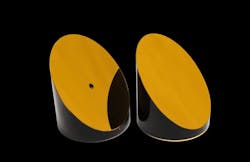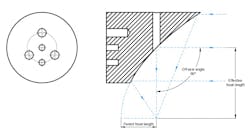Off-Axis Parabolic Mirror
An off-axis parabolic mirror is a specialized optical mirror cut from a larger parabolic mirror. Parabolic mirrors collimate light, and an off-axis parabolic (OAP) mirror will do the same, and can also focus incident collimated light to a point. At Avantier Inc, we excel in delivering custom off-axis parabolic mirror design and manufacturing solutions for a wide range of applications
OAP mirrors are smaller than parabolic mirrors and are easier to incorporate into complex optical systems with minimal obstruction. Their small footprint and unique shape causes the mirror’s focal point to be readily accessible.
By definition, it is cut from the parent parabola at an off-axis: it is not centered on the parent’s optical axis. Because of this, the optical axis of the derivative mirror will be displaced from the optical axis of the parabolic mirror. The focal point, however, will be the same.
Off-set angle: The angle between the optical axis and the direction of the incoming or outgoing light beam in an off-axis parabolic mirror.
Parent focal length: The focal length of the ideal on-axis parabolic mirror with the same shape as the off-axis mirror.
Effective focal length: The actual focal length of the off-axis parabolic mirror, accounting for the offset angle and deviation from the ideal configuration.








